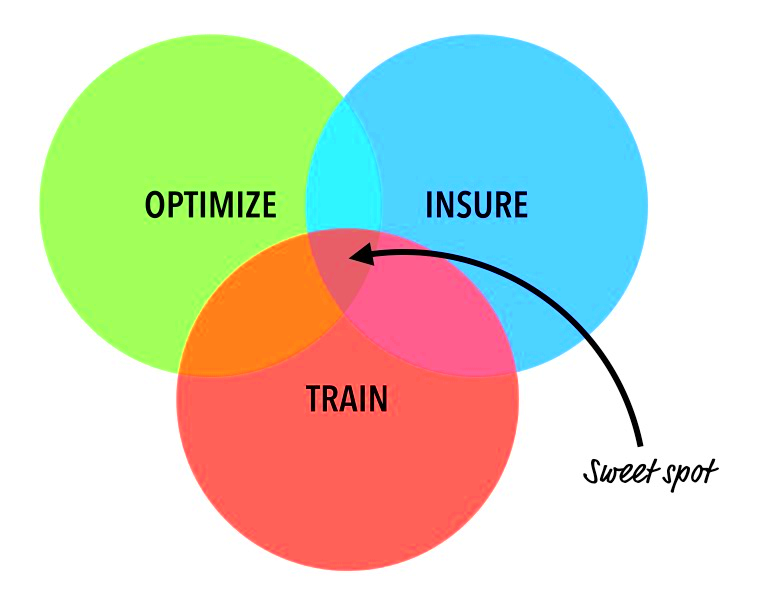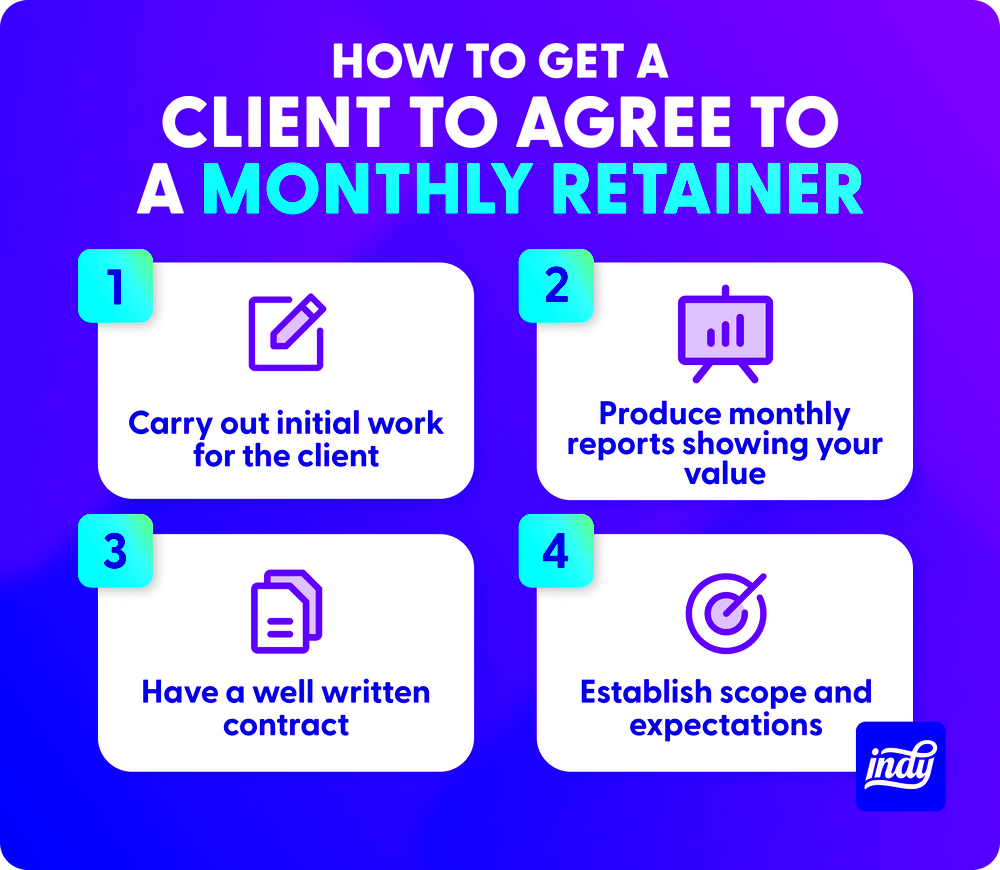For freelancers, a retainer is a payment agreement that allows clients to reserve your time and expertise in advance. Instead of waiting for individual projects or invoices, clients pay a set fee to ensure your availability for a specific period. This can provide consistent work and income for freelancers, making the workflow more predictable and stable. Retainers are particularly useful in fields like graphic design, consulting, and digital marketing, where clients may need ongoing support.
Types of Retainer Agreements

Freelancers can work with clients on different types of retainer agreements, each suited to specific needs. Here are some common types:
- Monthly Retainer: A set number of hours or tasks each month, providing ongoing support for clients.
- Project-Based Retainer: Often linked to longer projects, where freelancers handle tasks over a few months.
- Access Retainer: Grants the client access to the freelancer’s expertise or advice without specific project hours. This is popular in consulting roles.
- Service Retainer: Involves a specific set of services each month, often found in roles like social media management or content creation.
Each retainer type has unique benefits, depending on the freelancer’s skills and the client’s requirements. Understanding these options can help freelancers pick the agreement best suited to their work style and income goals.
Also Read This: How to Cash Out Your Fiverr Balance
Benefits of Working on a Retainer Basis

Retainers offer several key advantages for freelancers:
- Reliable Income: Retainers provide a steady income stream, reducing the pressure to constantly find new projects.
- Stronger Client Relationships: Working with a client on a retainer builds a long-term partnership, leading to trust and potentially larger projects.
- Better Time Management: Knowing in advance what work is needed helps freelancers manage their schedules more effectively.
- Enhanced Focus: Retainers allow freelancers to concentrate on the client’s needs without juggling multiple small projects, leading to higher-quality work.
Retainers also help clients feel confident in the freelancer's commitment, making them a popular choice for businesses that need ongoing support.
Also Read This: How to Work on Fiverr: A Comprehensive Guide
Setting Up a Retainer Agreement

Creating a retainer agreement starts with clear communication between the freelancer and client. This agreement outlines essential details, such as the scope of work, payment terms, and expectations. By clarifying each party’s roles upfront, freelancers can build a solid foundation for a successful retainer relationship.
Here are key elements to include when setting up a retainer agreement:
- Scope of Work: Define specific tasks or services you will provide. The clearer the scope, the easier it is to manage expectations and avoid misunderstandings.
- Hours or Deliverables: Determine if the retainer covers a set number of hours per month or a list of deliverables. This ensures both parties know exactly what is expected.
- Payment Terms: Specify payment details, such as monthly fees, due dates, and penalties for late payments. Some freelancers require payment upfront.
- Termination Clause: Outline conditions under which the agreement can be canceled by either party, along with any notice requirements.
Setting up a detailed retainer agreement can protect both the freelancer and the client, ensuring smoother communication and a more reliable working relationship.
Also Read This: How to Change My Fiverr Account to Seller
How to Price Retainer Services

Pricing a retainer service is one of the most critical aspects of working with retainers. The rate should reflect the value of your work, the time commitment, and the consistency offered by the client. There are several approaches to pricing retainers:
- Hourly Rate: Multiply your hourly rate by the estimated hours needed each month. This approach works well for retainer agreements based on a set number of hours.
- Value-Based Pricing: Set a rate based on the value you provide to the client, rather than just hours worked. This is effective for roles that directly impact the client’s revenue or efficiency.
- Tiered Packages: Offer different service levels at different price points, allowing clients to choose what best fits their needs.
For example:
| Package | Monthly Price | Included Hours/Services |
|---|---|---|
| Basic | $500 | 10 hours or specific tasks |
| Standard | $1,000 | 20 hours or more comprehensive tasks |
| Premium | $2,000 | Full service, custom support |
Pricing retainers appropriately ensures fair compensation while aligning with the client’s budget and expectations.
Also Read This: How Much Should I Charge as a Freelancer
Managing Client Expectations with Retainers
Managing expectations is vital in any retainer-based relationship, as it helps both freelancers and clients stay aligned on goals and outcomes. Consistent communication can make a big difference in keeping the relationship smooth and productive.
Consider these tips for managing expectations effectively:
- Set Clear Boundaries: Specify what is included in the retainer and what is not. This prevents clients from assuming all tasks are covered by the retainer fee.
- Regular Updates: Provide monthly or weekly updates on your progress. This transparency reassures the client that their investment is paying off.
- Adjust as Needed: As the project evolves, the scope or frequency of services may need to be revisited. A well-structured retainer agreement should allow for adjustments.
Good communication, clear deliverables, and periodic reviews of the retainer arrangement help foster trust and maintain a productive working relationship with clients.
Also Read This: What is a Source File on Fiverr?
Best Practices for Retainer Success
For freelancers, working on a retainer basis can be highly rewarding, but it requires thoughtful management. Following best practices can help ensure a successful retainer relationship, providing long-term benefits for both you and your client.
Consider these strategies for achieving success with retainers:
- Define Clear Goals: Set specific objectives with your client at the start of the retainer. Goals give structure to your work and allow both you and the client to measure progress.
- Keep Communication Open: Regular communication is essential for maintaining alignment. Schedule check-ins to discuss any updates or address issues proactively.
- Track Your Time: Even if you aren’t billing hourly, tracking your time can help you assess whether the retainer is fair for the amount of work required.
- Document Everything: Maintain records of completed tasks, feedback, and any scope changes. Documentation is invaluable if any questions arise about the services provided.
- Be Flexible: While structure is important, being open to minor adjustments can help strengthen client relationships. Retainers often evolve, and adaptability can be beneficial.
By setting clear goals, maintaining transparency, and staying adaptable, freelancers can build strong retainer relationships that enhance client satisfaction and ensure a steady income.
Also Read This: Starting a Career as a Freelance 3D Artist
Frequently Asked Questions About Retainers
Many freelancers have questions about how retainers work, and clients may also need clarity. Here are some frequently asked questions:
- What happens if the work exceeds the retainer?
If the work goes beyond the agreed hours or tasks, discuss additional billing options with the client. Many retainers include an hourly rate for extra work. - Can I end a retainer agreement?
Yes, retainers usually have a termination clause that outlines how either party can end the agreement with proper notice. - What if the client doesn’t use all the hours?
Retainer agreements typically do not allow unused hours to roll over. However, clarify this with the client upfront. - Is a retainer right for every client?
Not necessarily. Retainers work best with clients who need ongoing support, such as social media management or marketing.
Understanding these common questions can make it easier to address concerns and set expectations with clients from the beginning.
Final Thoughts on Retainers for Freelancers
Retainers can transform the way freelancers work by providing a steady income, fostering strong client relationships, and allowing for better time management. While setting up and managing retainers requires careful planning, the benefits often outweigh the initial effort. By clearly defining the scope, maintaining open communication, and being proactive about adjustments, freelancers can enjoy the stability and satisfaction that retainer agreements bring.
For freelancers seeking consistent work and dependable income, retainers are an excellent option. With clear goals and effective management, retainers can create a win-win scenario that leads to long-term success for both freelancers and their clients.




